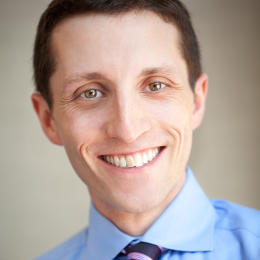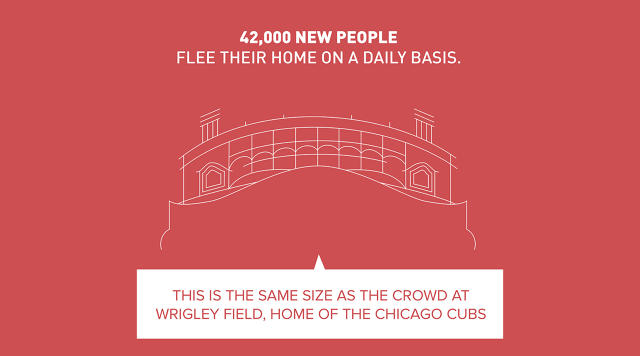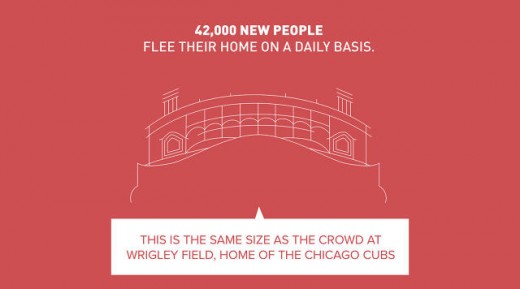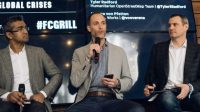A U.N. agency’s Radical test In Addressing The Refugee situation
The Hive, an initiative of the U.N. Refugee agency, has bold ambitions: remedy the refugee difficulty, and use knowledge to become nonprofits.
December 30, 2015
after I meet Brian Reich at a cafe in new york, I ask him what’s new. “simply looking to remedy the refugee hindrance,” he says casually.
the first 1/2 of Brian Reich’s CV feels like one thing out of Parks and recreation. In 1997, at 18, Reich turned into the youngest member of bill Clinton’s speechwriting team. He took day off from school two years later to become Al Gore’s briefing director on the White home. “I grew up working in politics,” is how he puts it. He reduce his teeth fretting over swing voters, and nonetheless refers to Bush vs. Gore because the time “the Supreme courtroom took my job away.”

After his younger political occupation and faculty, Reich spent a few years bouncing round different businesses, working with shoppers as disparate as corporate brands like Volkswagen and charities just like the pink move. throughout, Reich always nurtured an passion in human conduct: How might you persuade any person they wished a car? How might you persuade someone they must vote?
progressively, Reich fused his various pursuits right into a growing passion: the best way to shake up the sector of nonprofits.
the problem With Philanthropy
Reich got here to feel that nonprofits were ignoring one of the most new insights coming from the world of political and brand campaigns. the entire philanthropic world, he got here to really feel, was once a “philanthropic-industrial complex” stuck in very set patterns of thinking. particularly, there used to be an obsession with getting folks to donate cash—an understandably essential metric, but perhaps no longer the only one price measuring.
“It’s like dating,” Reich says of the everyday nonprofit mindset, which asks for money as soon as someone expresses hobby. “on this planet of nonprofits, i suppose you’re going to sleep with me in an instant. ‘Oh, you roughly like me? Sleep with me.’ over and over again. In an actual relationship, you meet the friends, the chums have to love you, it’s a must to not screw up birthdays…”
Reich got here to feel specifically that the arena of nonprofits was overlooking a key demographic: one thing just like the altruistic an identical of a swing voter.

to give an explanation for, Reich draws a pair of concentric circles. The innermost circle represents the core 10 million americans who are typically actively engaged with philanthropy, and open to being solicited. An outer ring represents the subsequent 10-15 million of so-called “lookalikes”—people who resemble the actively philanthropic and are deemed price focused on with the aid of most NGOs.
Then Reich draws a 3rd ring. He calls these “persuadables,” people who find themselves more or less on the fence about being altruistic in any respect, but could—probably—be persuaded. Reich came to really feel that attending to the behavior of persuadables will have to be the next frontier in nonprofit building. There’s probably a huge selection of them, finally, and he believes that if you might want to spend instruments persuading the persuadables, then these “lookalikes” one rung in would topple towards do-gooding naturally, like dominoes.
the only drawback? nobody had actually studied persuadables in the nonprofit area. And nobody truly knew the right way to learn about them. It was not likely that you should get them to donate to a cause instantly. but you may get them to change into mindful and trained about it; you may even get them speaking to their chums about it. And years later, Reich posited, these persuadables might blossom into financial donors to a lead to.
a couple of years ago, Reich teamed up with Ari Wallach, who runs a consulting agency referred to as Synthesis Corp., with some purchasers in the nonprofit world. Wallach shared lots of Reich’s feelings about nonprofit sclerosis. but one in every of Synthesis’s purchasers, the United nations excessive Commissioner for Refugees, had displayed a willingness to test with new forms of outreach. Wallach pitched the UNHCR for a significant amount of funding to fuel a startup-like operation experimenting with instructing the American public in regards to the present world refugee concern. The UNHCR bit the bullet, and Reich and Wallach launched The Hive in late 2014, with assured funding for two years.

The Hive and a “manhattan challenge for Nonprofits”
So what is the Hive, and what does it do? It’s a group of 10 individuals working out of recent York, exploring the universe of “persuadables” within the context of the refugee problem. Reich and his colleagues are at all times asking, “Who will we get to engage round this difficulty that the UNHCR might now not in any other case goal? and the way will we measure their conduct?” Its hiring practices are unorthodox, for the nonprofit world, at the least. “we now have the primary full-time information scientist in a nonprofit within the U.S. all for engagement,” says Reich.
The Hive has a large berth to scan with things that an august body just like the UNHCR might no longer in most cases are trying. It made a “Jesus was once a Refugee” bumper sticky label, riffing on a line of the Pope’s, and dispensed it across the time of his U.S. discuss with. during the most important League Baseball playoffs, the Hive launched centered social media advertisements explaining that the selection of folks compelled to flee their homes on a daily basis—forty two,000—was about the same as those that would fill a baseball stadium. some of the Hive’s greatest successes came from piggy-backing onto the “Straight Outta…” meme that circulated round fb all the way through the release of the NWA biopic. The Hive circulated pictures naming the cities refugees had fled or the camps they’d been resettled in.
If it’s now not in quest of donations from the folks it goals, how does the Hive measure its success? Reich’s first resolution is that, for now, it’s too early to tell. Most businesses with imaginative and prescient suppose relating to the “lifetime price” of a customer, and Reich thinks it will be good for nonprofits to suppose that method, too. Reich and his colleagues have an interest to look who clicked or shared, but they’ll be much more interested to see if that person donates or shows up to an event years down the line. The Hive is still chopping the data, teasing out patterns and insights. each and every take a look at is scientifically designed, complete with keep watch over teams. Science makes growth at its own %. not too long ago, the Hive ran an ad marketing campaign that acquired “actually zero clicks,” says Reich. It was a hit, in a sense: “We realized lots.”
The Hive may just in finding its finest success if it evokes different huge nonprofits and NGOs to invest in identical initiatives—or to spend money on the Hive itself. Reich thinks the best investment nonprofits could make is to collectively fund research; he speaks of the necessity for “new york project for nonprofits,” the place pooled resources could bring in a new science of altruism.
“That lack of collective intelligence is so vital, it’s borderline unhealthy,” says Reich of the fumbling and from time to time off-placing means many nonprofits interact with potential do-gooders. “If many companies truly cared about fixing the issues they have been advocating for, most of them would put themselves out of industry the next day to come.”
(89)













